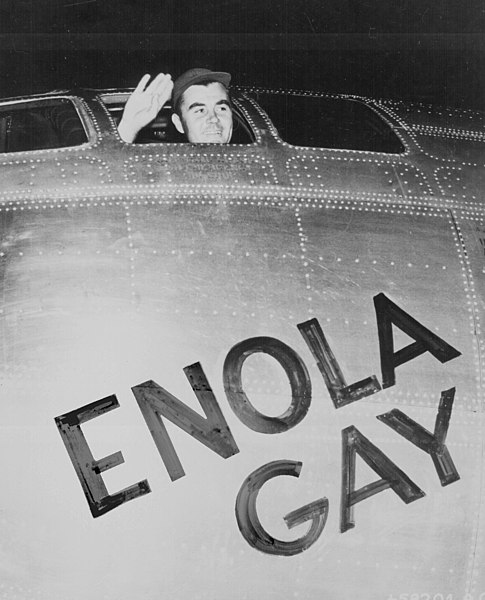Arthur Godfrey was born in New York on this day in 1903. Few people under forty years old probably recognize the name "Arthur Godfrey" or have any idea of his celebrity during the middle decades of the last century. He was a star of stars on radio from coast to coast, an ambitious man with a folksy broadcast persona who in real life turned hubris into a tyranny that eventually destroyed his career. Despite his shortfalls, he remains one of the most influential shapers of radio and television entertainment in the U.S.
 |
| Godfrey at CBS Radio, 1948 |
Godfrey was introduced to radio during his Navy and Coast Guard careers. He broke into entertainment and civilian radio in Baltimore and Washington in the early 1930s. He also earned his pilot's license in 1931, an achievement that would lead to a distinguished role in military and civilian aviation. His Arthur Godfrey Time breakfast show was heard on radio coast-to-coast shortly after World War II. By 1952, it had joined his other program, Arthur Godfrey's Talent Scouts, on television. Godfrey developed a wonderful easy going, friendly on-air style that captured American radio audiences as he chatted with his regulars - he called them his "little Godfreys" - and special guests and sang mostly novelty song while accompaying himself on his ukulele. That style, coupled with his big smile and his signature red hair made him a natural for television, and for print advertising.
Without question, he was television's first star, rising quickly, then falling almost as fast, a victim of the darker elements of fame and ego. By 1960, he disappeared from regularly scheduled television and began a brief career in film. By 1972, the radio programs ended and his television appearances dwindled as the decade closed. He died in New York in 1983.
Godfrey's voice and image had broad media exposure into my college years but I only recall listening to his program in morning hours during family vacations in Burlington, West Virginia. Actually the small airfield there provided a much stronger linkage to Godfrey who owned several planes that he flew either from his Leesburg, Virginia, farm or from the nearby airport about 55 air miles east of Burlington's Baker's Air Park. It was owned and operated by Georgia and David Baker, a wonderful couple I came to know early on as my adopted aunt and uncle. They lived next door to my summer place and across the road from the airfield. The flying stories were endless and I was a willing listener.
Although he wasn't a frequent visitor, Godfrey attended occasional fly-ins there in the '50s. It was quite an honor to have "your" airfield graced by radio and television's most famous celebrity. It reminds me of visiting small town museums where the treasured display shows an aging photograph of President Truman waving from his campaign train in 1948. Sometimes history comes at a slow pace. Nevertheless, Godfrey's visits were the talk of the town for Burlington folks. Late one afternoon, the little airfield may have saved his life. He and a passenger made a critical emergency landing at the airfield. With its mechanical issues resolved the plane continued on its final leg to Leesburg later in the week. I'll never understand how they got a twin engine aircraft out of that little dogleg of grass. They probably stripped it, released the brake, went balls to the wall, and sampled the tops of the old sycamores at the end of the field. Fifty or so years is a long time to remember, but it wouldn't surprise me if he didn't send the passenger home by car. For a pilot who at one time flew everything in the U.S. Air Force arsenal, "wheels up" at Burlington probably wasn't much of a challenge. It did, however, require a tempered ego to reduce the risk.
The video below is a fascinating look at aviation from the 1950's and a personal look at Godfrey the aviator.
We know for certain he had both a temper and an ego, not an unusual combination for super successful people. And Godfrey was surely super and successful. He knew how to transcend the airwaves and come into your house for breakfast, make you laugh, maybe even sell you something you didn't need. It was television in it's first real decade in the U.S. And Godfrey transitioned his leading radio talk show into the leading television talk show almost overnight. It was the equivalent of going from silent film to talkies twenty years earlier. He made it look easy. He put millions of listeners at ease, made good conversation, strummed the ukulele, sang a bit, made us laugh, then sent us off for the day. We had a good time. That's really because it was Arthur Godfrey's time.
Sources
Photos and Illustrations:
CBS photo, the Harris & Ewing Photo Collection, Library of Congress
Moffett Field photo, National Aeronautics and Space Administration (NASA)
Text:
Arthur Godfrey, Wikipedia























